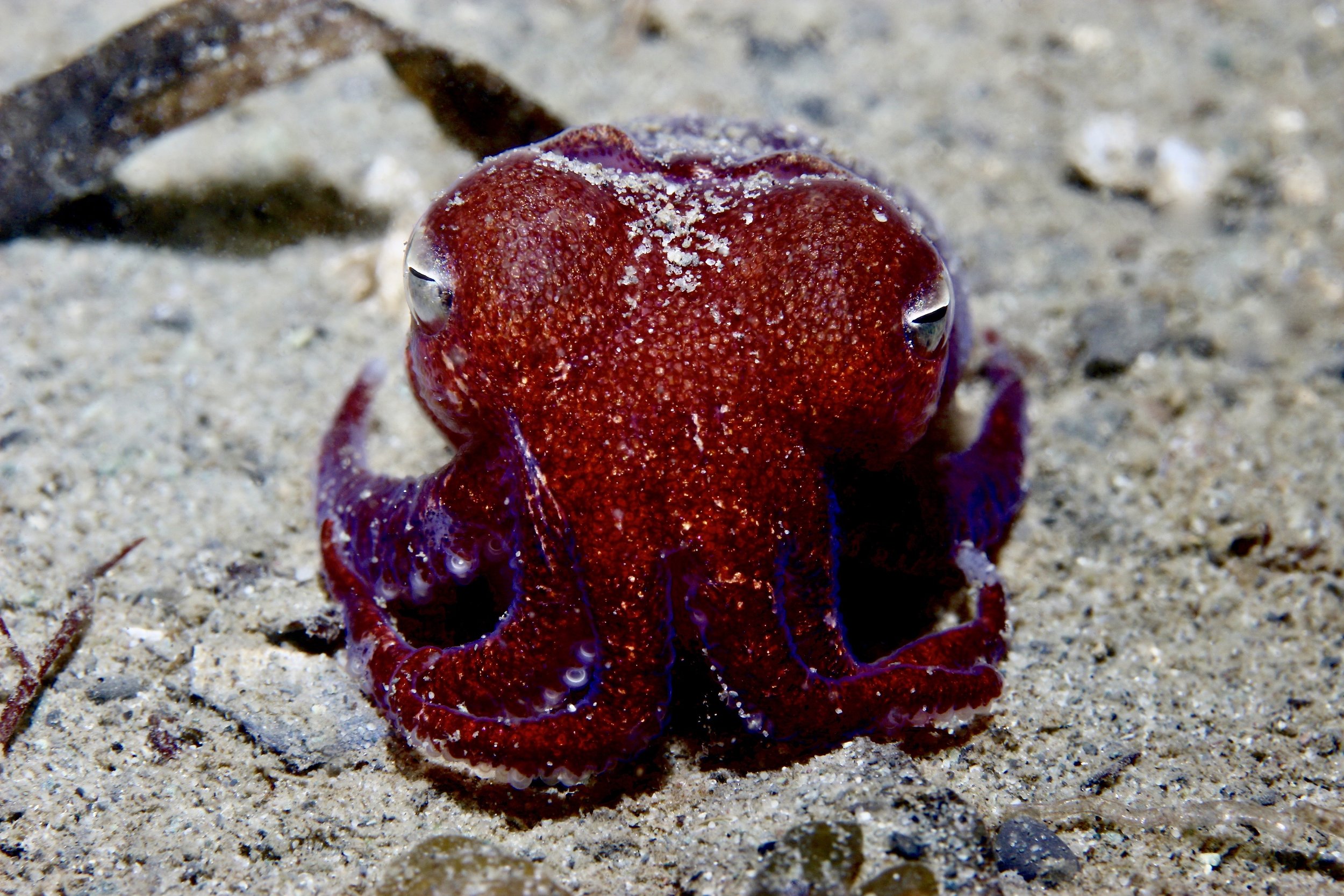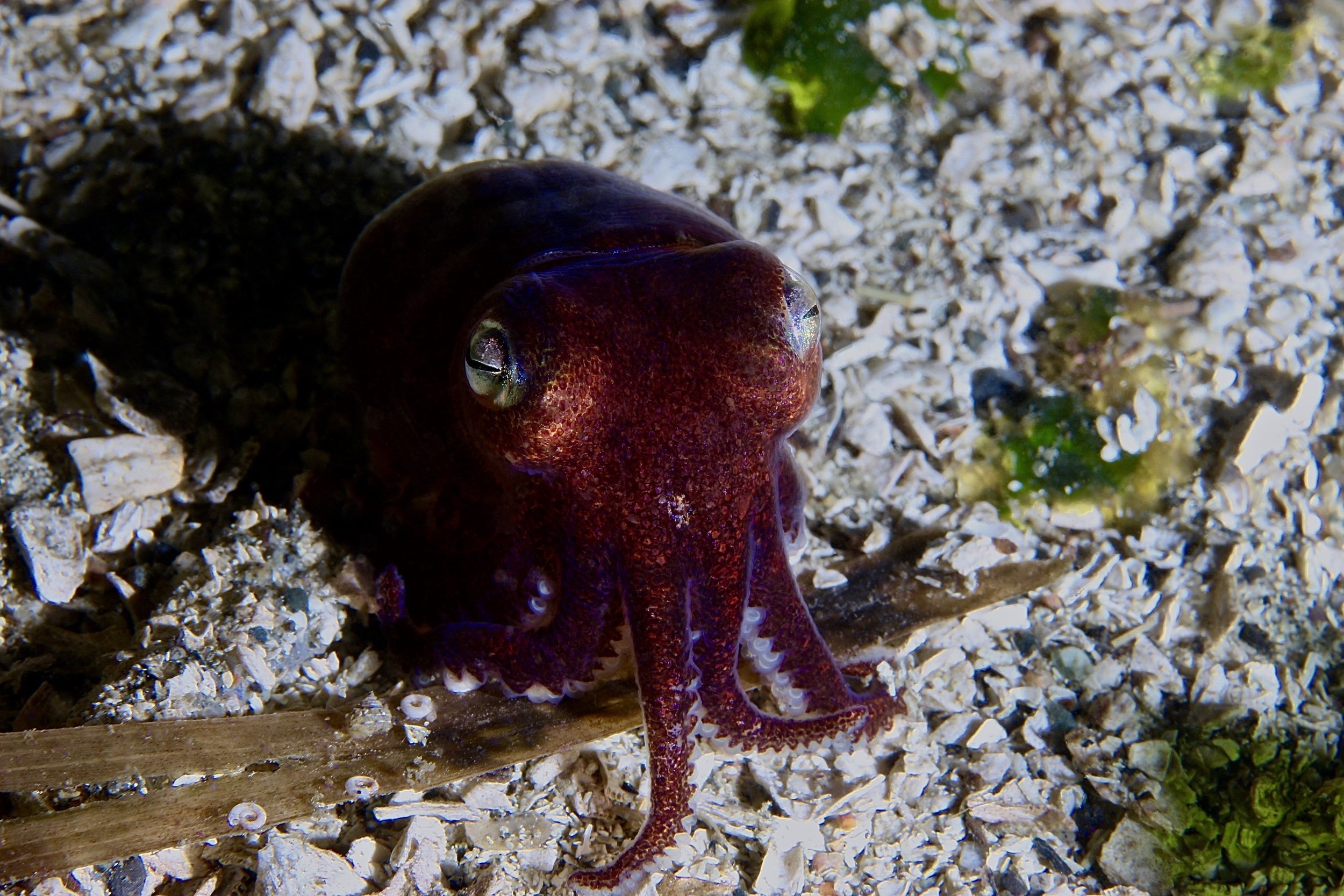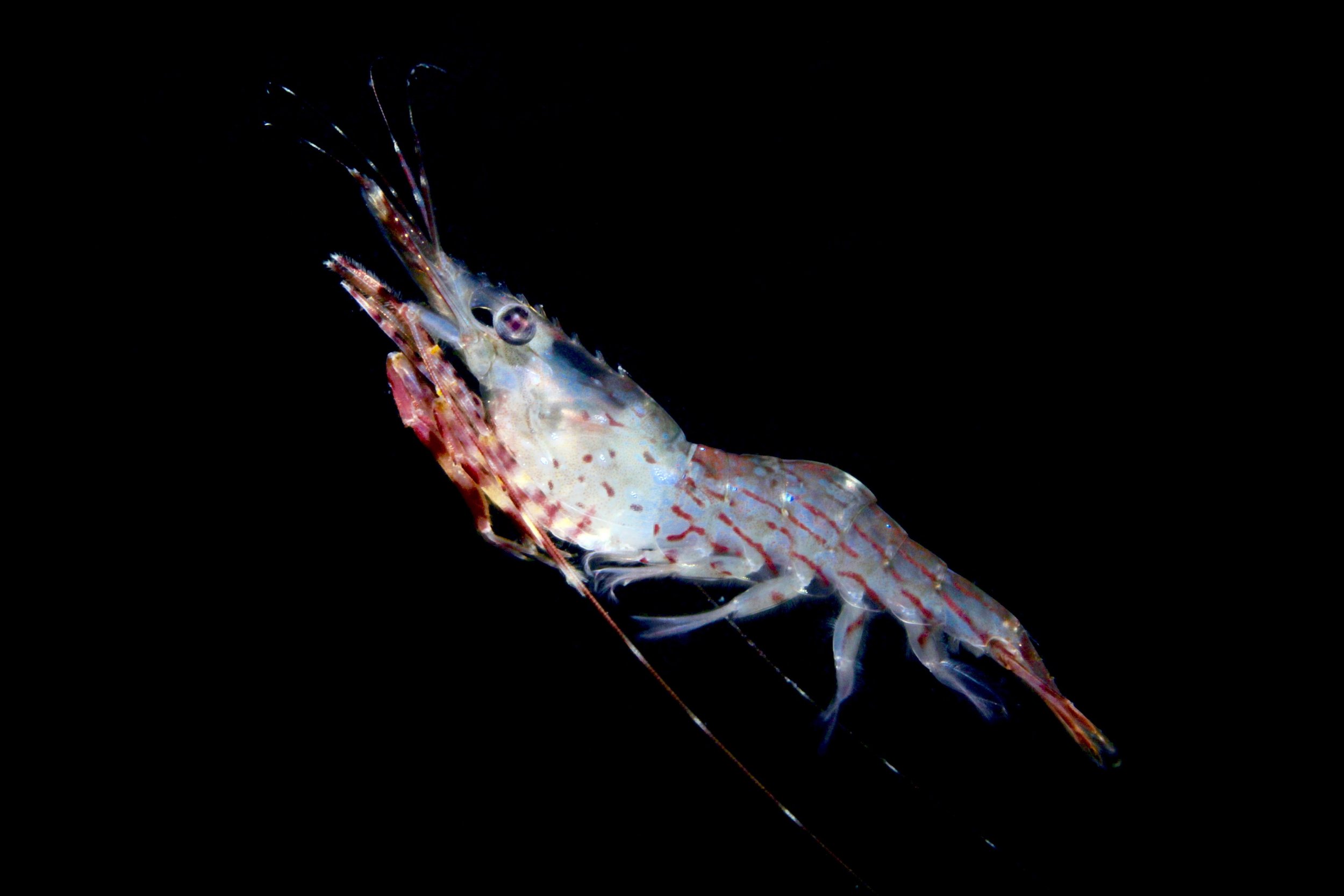Stubby Squid
Rossia pacifica
An interesting trait that is shared by many of the Northeast Pacific’s small, adorable creatures is how notoriously difficult to find they can be. In addition to the challenge of tracking down suitable habitat for these species, they often undergo seasonal migrations to habitats that are beyond our reach [1].
Among this group of pocket-sized critters is the Stubby squid, who is by far and without question the most elusive and challenging to find. This artwork is inspired by my photograph of the Stubby squid below:
February 2020: An adult Stubby squid sits attentively under a harbour on southern Vancouver Island. This individual was slightly larger than a golf ball.
📖 Description 📖
Despite what their name may suggest, Stubby squid are not true squid but instead belong to a group of animals known as the bobtail squids. These animals are in fact more closely related to cuttlefish than they are to true squids.
Among the bobtail squids, Stubby squid are quite large; adults can grow to sizes just larger than a golf ball. In addition, research has shown that females are just slightly larger than males [2].
May 2020: A juvenile Stubby squid shows off its swimming abilities after leaping off the seafloor. This individual was likely less than 1 month old, and no larger than a chickpea. Photographed in Deep Cove in North Saanich, B.C.
🌎 Distribution 🌎
Despite its cryptic nature, the Stubby squid has a very wide distribution, having been encountered through much of the northern Pacific Ocean during scientific surveys, scuba diving, and bycatch from commercial and recreational fishing [2].
Distribution of the Stubby squid, Rossia pacifica. Suitable habitat depicted in red.
🏝 Habitat 🏝
Thoughts of the deep sea often come with images of the more frightening creatures that live there. It is hard to imagine something like the Stubby squid occupying the same habitats as the Humpback anglerfish and the Ox-eye oreo, however this species has been spotted as far as 1,300 meters below the surface [3]!
Sightings of Stubby squid have also been documented as shallow as the low intertidal zone in the Salish Sea, giving this little cephalopod one of the widest depth ranges of any species local to our waters [4].
Depth of suitable habitat for the Stubby Squid, Rossia pacifica. Suitable habitat depicted in red. Not to scale.
Whether found shallow or at depth, the Stubby squid is almost always found on silty & muddy bottoms. In rare cases, individuals may be seen perching on low-lying blades of kelp or on rocky outcroppings. Research has shown that Stubby squid in shallow water are particularly fond of steep-sloping habitat with nearby access to deep water [1].
December 2019: This individual was the first Stubby squid I had ever seen, and certainly one that I will never forget. The sighting of this animal ended a search spanning three years of night diving. Photographed in an undisclosed location on Vancouver Island, B.C.
🦐 Diet 🦐
Like most cephalopods, Stubby squid are very effective predators with a wide variety of prey. Their diet consists mainly of small shrimp, but include small crabs, ostracods, and even small fish. When studied in captivity during one study, Stubby squid refused to feed on dead or dying prey, instead preferring the thrill of catching their own food themselves [2].
October 2017: A Coonstripe shrimp flutters up off the sea floor in search of food. One of many species that may be hunted by the Stubby squid. Photographed in Oak Bay, B.C.
🐙 Life Cycle 🐙
Stubby squid reproduce by laying their eggs on the underside of rocks or crevices. It takes up to 9 months for these eggs to hatch, and the eggs are certainly built for the task! The ‘shell’ of each egg is very hard to prevent scavengers from cracking them open. Stubby squid hatch from their eggs as miniature adults.
Like most cephalopods, Stubby squid are a semelparous species, meaning the end of their lives comes soon after reproduction.
While they may only live for up to two years, their short life span may help Stubby squid populations quickly adapt to changing ocean conditions. Animals that live fast and reproduce quickly are often the first to rebound after challenging periods in an ecosystem.
April 2019: The next generation of Stubby squid waits inside a cluster of eggs in a small crevice. Photographed in Nanoose, B.C.
📚 References 📚
[1] Anderson, R.C. (1987). Cephalopods at the Seattle Aquarium. International Zoo Yearbook, 26:41-48. https://zslpublications.onlinelibrary.wiley.com/doi/abs/10.1111/j.1748-1090.1987.tb03132.x
[2] Brocco, S. L. (1967). Aspects of the biology of the sepiolid squid Rossia Pacifica Berry. [Bachelor’s thesis, Sonoma State College]. University of Victoria Library. http://dspace.library.uvic.ca/handle/1828/12422
[3] Samuelson, K. (2016, August 16). Yes, This Adorable Googly-Eyed Stubby Squid Is Real. Time Magazine. https://time.com/4454580/stubby-squid-rossia-pacifica-spotted-on-sea-floor/
[4] Dyer, A. (2002). Rossia pacifica (Berry, 1911). Invertebrates of the Salish Sea. https://inverts.wallawalla.edu/Mollusca/Cephalopoda/Rossia_pacifica.html







